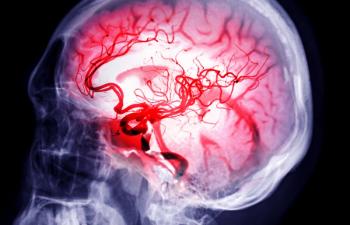
The Role of Ivabradine in Patients with Heart Failure
Key opinion leaders in cardiology and pharmacy consider the role of ivabradine to reduce heart rate and lower the risk of hospitalization for patients with heart failure.
Episodes in this series

Richard Mullvain, RPh, BCCP, BCPS, CCCC: I’m going to shift gears to something I’ve been looking forward to talking about: ivabradine. I’m going to call on Ryan to help us out. I’d love to hear your take on what a funny channel it is and how this works. I’ve been following this for quite a while, and I noticed that it was in the European guidelines a while ago, but it didn’t make it into the American guidelines. Now we have a mention of it in the update we saw this year. First, we’re going to discuss the role of ivabradine for reducing heart rates. You’ll be able to build on that. Talk about that mechanism of action for heart failure treatment. Also, where does ivabradine fit in with guideline-directed medical therapy? I’ll turn it over to you, Ryan.
Ryan Jacobsen, PharmD, BCPS: Thanks, Richard. Ivabradine—brand name Corlanor—has been around since 2015. It has a unique mechanism of action. It’s a selective inhibitor of the funny channel. What does that mean in terms of cardiovascular function? It reduces the spontaneous pacemaker in the heart: the sinoatrial node. It reduces resting heart rate by blocking the hyperpolarization-activated, cyclic nucleotide-gated channel. I prefer to call that the funny channel, as you said. That’s a lot less of a mouthful. Essentially, it reduces heart rate. It doesn’t affect ventricular repolarization or myocardial contractility, and it doesn’t affect blood pressure.
The reason this is particularly important in heart failure is because elevated resting heart rate independently predicts cardiovascular morbidity and mortality, specifically in heart failure with reduced ejection fraction [HFrEF]. Heart rate lowering with beta-blockers is directly related to improved outcomes. In fact, a meta-analysis reported that for every 5 beats per minute decrease in resting heart rate, there was an 18% reduction in all-causes mortality observed. The guidelines give us solid recommendations in terms of a treatment algorithm and getting to targeted doses, or those doses that were used in clinical trials that demonstrated evidence of benefit. Some limitations are blood pressure lowering or potential adverse effects to beta-blockers.
How does ivabradine fit within guideline-directed medical therapy? The ACC [American College of Cardiology]/AHA [American Heart Association] recommendations give it a class 2a recommendation. We have a high-quality, randomized controlled trial—the SHIFT trial—that was published. It demonstrated a reduction in hospitalizations but no reduction in mortality. The 2021 Expert Consensus Decision Pathway document provides a recommendation to reduce the risk of hospitalization in HFrEF—with an ejection fraction less than 35%—in patients who are on a maximally tolerated beta-blocker, who are in normal sinus rhythm with a resting heart rate greater than 70 beats per minute.
Where I see this fitting is in a niche patient population. This isn’t part of the initial therapy. Once you get past that stage of initiating and aggressively titrate therapy to maximally tolerated doses and then evaluate the patient. This is not a medication that’s started in an acutely decompensated patient. This would be more on an outpatient basis.
Richard Mullvain, RPh, BCCP, BCPS, CCCC: I agree with you. We haven’t seen tons of use, but it certainly plays a niche role for some of our patients.
Transcript edited for clarity.
Newsletter
Stay informed on drug updates, treatment guidelines, and pharmacy practice trends—subscribe to Pharmacy Times for weekly clinical insights.














































































































































































































